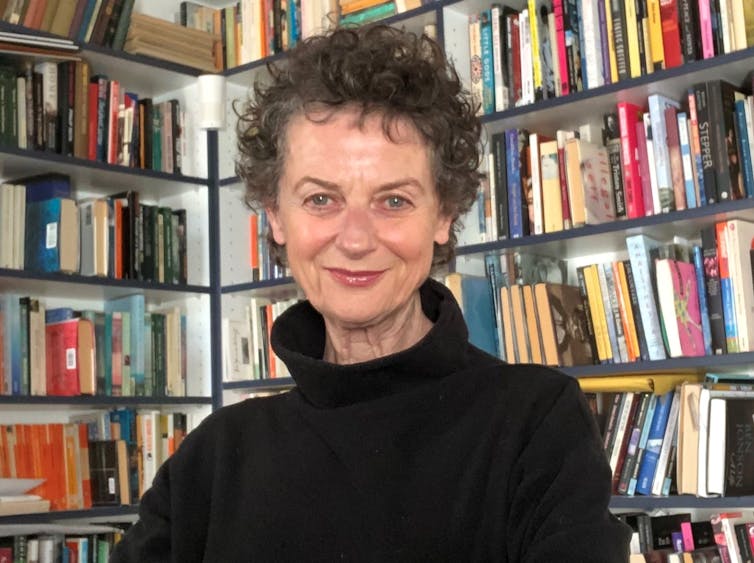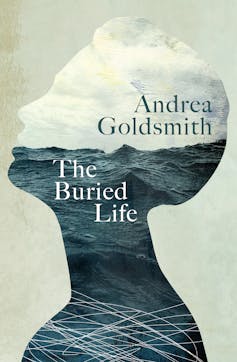Detta inlägg post publicerades ursprungligen på denna sida this site ;
Date:
Author: Liz Evans, Adjunct Researcher, English and Writing, University of Tasmania
Original article: https://theconversation.com/death-denial-and-uncertainty-define-andrea-goldsmiths-heartfelt-new-novel-the-buried-life-254210

In her ninth novel, The Buried Life, Andrea Goldsmith explores ambitious themes of death, denial and uncertainty. She examines the illusion of emotional security among the educated middle classes of inner-city Melbourne. Familial dysfunction and destructive relationships define the intersecting lives of Adrian, Laura and Kezi, as each struggles with the anxiety of the unfamiliar.
These are grand topics, but Goldsmith treats them with grace rather than high drama. She employs an emotional, rather than a political lens for her universal concerns, investigating the fear of death as a fear of the unknown, and she shows how this fear can prevent the necessary rupture of change. Hence the title of the book, which is taken from a poem of the same name by Matthew Arnold.
Review: The Buried Life – Andrea Goldsmith (Transit Lounge)
Goldsmith is gentle with her flawed protagonists as they navigate their privileged worlds, quietly messing up in ways that are both frustrating and relatable. And she is generous with the reader. She skilfully employs a third-person perspective to keep us close to her characters, granting us insights they do not possess for themselves. The result is an impressive and astute reflection on the finitude of life, the boundaries of bodies and time, and the notion of living consciously.
Eventually, this all boils down to the question of immanence. Is heaven only to be found through faith and death? Or is it the definition of a fulfilled and loving life?
Regret, resentment and defiance
Professor Adrian Moore is a renowned scholar of contemporary death studies at a high-ranking university. Orphaned as a child, Adrian refuses to accept the significance of his past. He stubbornly attributes his research interests to a fascination with religion, spirituality and Epicurean ideas.
Adrian is secretive about his upbringing, even among friends. But as he turns 43, he remains lonely and depressed, following the unexpected breakdown, the year before, of his long-term relationship with Irene.
His close friend and neighbour is 28-year-old paper-maker Keziah Ferguson, who lives alone in a terraced cottage. Kezi works at a call centre to pay the rent for her home and art studio. She has been rejected by her family’s strict religious community on the grounds of her sexuality and is grappling with the grief of her excommunication.
Veering between regret, resentment and defiance, Kezi relies on Adrian for comfort. Theirs is an unlikely relationship, which is nevertheless both convincing and touching. Adrian’s affectionate support enables Kezi to search for a creative way to resolve her broken situation. Ultimately, she needs to find a way to communicate her love for her family, without compromising the independence she has fought so hard to establish.

Transit Lounge.
When Adrian spies the strikingly beautiful 57-year-old Laura Benady at the counter of a high-end cheese shop, everything starts to change. Like Adrian, Laura has been shaped by profound loss at an early age and has never quite recovered. Like Kezi, she has been tyrannised in the name of love.
Overlooked and undervalued in childhood, Laura was easy pickings as a young undergraduate for the predatory Tony Sheldrick, an older student who dazzled her with his oily flattery and inflated ego. By the time she meets Adrian, Laura has spent 40 years in thrall to Tony, now a wilting and embittered academic whose career highlights are firmly behind him. Though she is a highly successful social scientist, she has been manipulated for decades by a husband who insists he has made her into the best version of herself. For Laura, marriage has entailed the death of self-agency and the sacrifice of her independent identity.
The monster at home
Goldsmith’s subtle and nuanced portrayal of Laura and Tony’s chilling relationship is masterful. Dispensing with cliches of quivering wives and murderous husbands, she presents the domestic sphere as a terrorising regime. Laura’s entrapment is revealed slowly and with unsettling conviction. Invested in the illusion of safety and security, she is unable to recognise the monster in her home.
Fortunately, Laura is not averse to the odd extra-marital indulgence, usually in the shape of a bout of no-strings conference sex. This makes her open to pursuing things with Adrian. They start slowly, sharing cheese lunches and sinking into free-flowing conversation, gradually growing closer. In time, they snatch evenings and then whole nights together, while Tony heads off to his all-male book club and his all-male hiking expedition.
But Laura, still entrenched in the belief that without Tony “she would not be whole, she would be nothing”, remains cautious. After a lifetime of compliance, the thought of leaving Tony is akin to suicide.

When Adrian introduces Laura to Kezi, the two women forge a connection that proves to be just as pivotal and transformational as the ones they each have with him. They meet for dinner at Adrian’s house, just after Kezi has ended her relationship with her girlfriend, Paige, whose religious beliefs have reignited Kezi’s internal conflicts around faith.
When Kezi explains the impact of her dogmatic, oppressive upbringing to Laura, the older woman recognises parallels with her marriage and begins to shift towards a personal epiphany.
Again, Goldsmith’s handling of the alignment between domestic abuse, coercive control, cults, brainwashing and terror is subtle, yet arguably more powerful than the overstated messages commonly found in crime fiction. As soon as Laura gains a flickering of awareness about her position, she holds herself responsible. She hopes to understand her role within the dynamic of her marriage, but she risks further immobilising herself with self-blame as she googles Patty Hearst and Stockholm syndrome. The affair with Adrian is almost immaterial to this painful and precarious journey.
Eventually, the bonds between the three main characters come into play when one of them is confronted by mortality. But the message of this absorbing and elegantly written novel is that death can occur in many ways, including psychological, emotional, social and spiritual.
Laura, Kezi and Adrian’s individual vulnerabilities are woven together in a challenge to social and cultural traditions. Each character’s proximity to death and the buried life is carefully choreographed, as they undergo different forms of the same existential crisis.
Unashamedly highbrow
The tone of The Buried Life is unashamedly highbrow. The novel’s cast of academics, creatives and white-collar professionals operates against an audacious backdrop of classical and ecclesiastical music and poetry.
Adrian’s encounter with Mahler is the fullest example. Near the beginning of the novel, on his way back from the Biennial International Congress of Death Studies in Adelaide, he stops at a nondescript coastal cafe for a toasted sandwich and is overcome by a recording of Kathleen Ferrier singing the final part of Gustav Mahler’s The Song of the Earth.
Adrian is not a great music lover, but he becomes obsessed with the composer. Fascinated by the strength of his response, he begins to research the influence of classical music on literature and religion. He quizzes Kezi about the integral role of music in her old church community. After meeting Laura, he uses Mahler as the soundtrack for his deepening emotions.
Ultimately, Adrian’s new passion gives way to his love for Laura and doesn’t amount to much more. Consequently, especially for readers unfamiliar with Mahler or not fond of classical music, this thread feels somewhat superfluous. It infuses rather than supports the narrative arc.
Other elements of the plot beg for more exploration. Kezi’s underage affair with her mother’s best friend, a “ravishing and electrifying” art historian, is casually mentioned, but raises ethical questions about consent and responsibility.
At the other end of the scale, Laura doesn’t appear to feel sexually hindered with Adrian who is 15 years younger. In a world where ageism persists in literature and life, this might seem refreshing. But given Laura’s personal insecurities, it is hard to believe she would not experience some self-doubt, even if only at the start. When she uncovers a shattering detail about Tony, Laura’s enraged reaction seems equally unlikely, given that she has always assumed responsibility for his behaviour and accepted his lies. A more convincing first response might have been an attempt at empathy, or another fault-finding mission aimed firmly at herself.
Overall, however, The Buried Life is an engaging and heartfelt story composed with sophistication and style and delivered with acute perception. Thought-provoking and satisfying, the novel handles complex issues in a compelling and sympathetic way that is enjoyable and ultimately uplifting.
![]()
Liz Evans does not work for, consult, own shares in or receive funding from any company or organisation that would benefit from this article, and has disclosed no relevant affiliations beyond their academic appointment.

